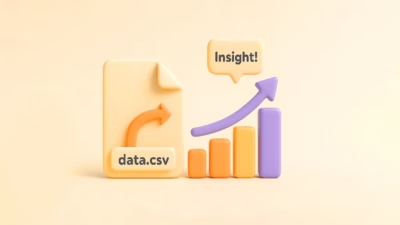So you’ve conquered Kaggle. Maybe you’ve racked up some medals, fine-tuned a few models, and your notebooks are getting some solid upvotes. First of all, congrats—that’s no small feat. But now you’re staring at the screen, wondering, “What’s next?” Here’s the uncomfortable truth: while Kaggle is an incredible playground for learning, it’s still just that—a playground. The real world? It’s messier, less forgiving, and infinitely more rewarding if you know how to navigate it.
The question isn’t whether Kaggle is valuable—it absolutely is. The question is: how do you take that foundation and level up to solving real-world problems that recruiters and companies genuinely care about? Let’s walk through it.
Understand the Messiness of Real Data
Kaggle datasets are like well-manicured gardens: clean, structured, and ready for you to pluck insights from. Real-world data? It’s the jungle. Missing values aren’t just a sprinkle here and there; entire columns can be unusable. You might find data in five different formats spread across three different storage systems. CSV? Maybe. But you’re also looking at SQL databases, NoSQL stores, logs, and maybe even PDFs if you’re really lucky.
The first skill you need to master is wrangling that chaos. I’m talking about:
- Connecting to multiple data sources (APIs, databases, flat files).
- Handling missing data intelligently—not just filling with zeroes or means.
- Understanding encoding issues and parsing unstructured text or images.
Kaggle gives you the knife. The real world hands you a machete and points to the jungle. Your job? Make a path.
Build End-to-End Pipelines
On Kaggle, you typically get a clean dataset, do some exploratory data analysis (EDA), train a model, and submit your results. Done. In real-world projects, that’s maybe a third of the journey. The real value is in building a robust, repeatable pipeline that goes from raw data to production-ready insights.
An end-to-end pipeline looks something like this:
- Data Ingestion – Pulling data from various sources reliably.
- Data Cleaning & Transformation – Handling nulls, normalizing formats, fixing inconsistencies.
- Feature Engineering – Crafting features that aren’t obvious at first glance.
- Model Training & Tuning – The part you’re already good at.
- Model Deployment – Serving your model as an API or integrating it into a larger system.
- Monitoring & Maintenance – Ensuring your model doesn’t drift into irrelevance.
If you’re not deploying models yet, now’s the time. Try Flask or FastAPI for serving models locally. Push one to Heroku or AWS just to see it in action. You’d be surprised how much you learn when your model needs to talk to the outside world.
Get Comfortable with Data Engineering
I’m not saying you need to become a data engineer, but here’s the thing: understanding the flow of data—how it’s collected, stored, transformed, and accessed—is crucial if you want to solve real business problems. On Kaggle, datasets are static. In the wild, they’re not. You’re dealing with streams of data, updating databases, and possibly even real-time analytics.
Learn the basics of:
- SQL and NoSQL databases
- ETL (Extract, Transform, Load) processes
- Stream processing (Kafka, Spark Streaming)
- Cloud storage (AWS S3, Google Cloud Storage)
Not only does this make you more versatile, but it also makes you the kind of person companies want to hire—someone who doesn’t just analyze data but truly understands it.
Learn to Communicate Results
You’ve built a predictive model with 95% accuracy? Great. But can you explain why it’s valuable? In Kaggle, you submit a score, and the leaderboard tells you how good you are. In real life, you submit your findings to stakeholders who might not know a decision tree from a Christmas tree.
You need to translate technical achievements into business outcomes. Visualizations help, but storytelling is key. Start thinking in terms of:
- How does this solve a business problem?
- What decisions can be made from these insights?
- What are the risks and assumptions?
If you can’t answer those questions, your model is just numbers on a screen.
Contribute to Open Source or Real Business Projects
Here’s where you really separate yourself from the Kaggle pack. Get your hands dirty with real projects that have real users. Contribute to open-source projects on GitHub, especially ones that are data-heavy. Or better yet, volunteer for a local business or nonprofit that has data but no one to make sense of it.
When you step outside of perfectly curated datasets, you start to understand the true lifecycle of a project. You’ll also learn to work with version control (Git), manage dependencies, and collaborate with others—all things a real data science job will demand.
Network and Showcase Your Work
This one’s simple but crucial. If you’re still just pushing notebooks to Kaggle, start sharing your projects on GitHub. Write blogs about your process, create tutorials, and engage with the community. Kaggle medals are impressive, but a well-structured GitHub repo with clear documentation? That’s where recruiters start paying attention.
LinkedIn is your friend here. Share your projects, talk about what you learned, and don’t be afraid to reach out to people in the industry. Real projects plus real connections? That’s your stepping stone to real job offers.
Wrapping It Up
Kaggle is a brilliant start, but it’s just that—a start. The real magic happens when you take those skills and apply them to messy, real-world data. When you build projects that aren’t just leaderboard-worthy but business-worthy. When you stop submitting CSVs and start deploying pipelines.
So what’s next after Kaggle? Everything. The jungle’s waiting. Grab your machete.





